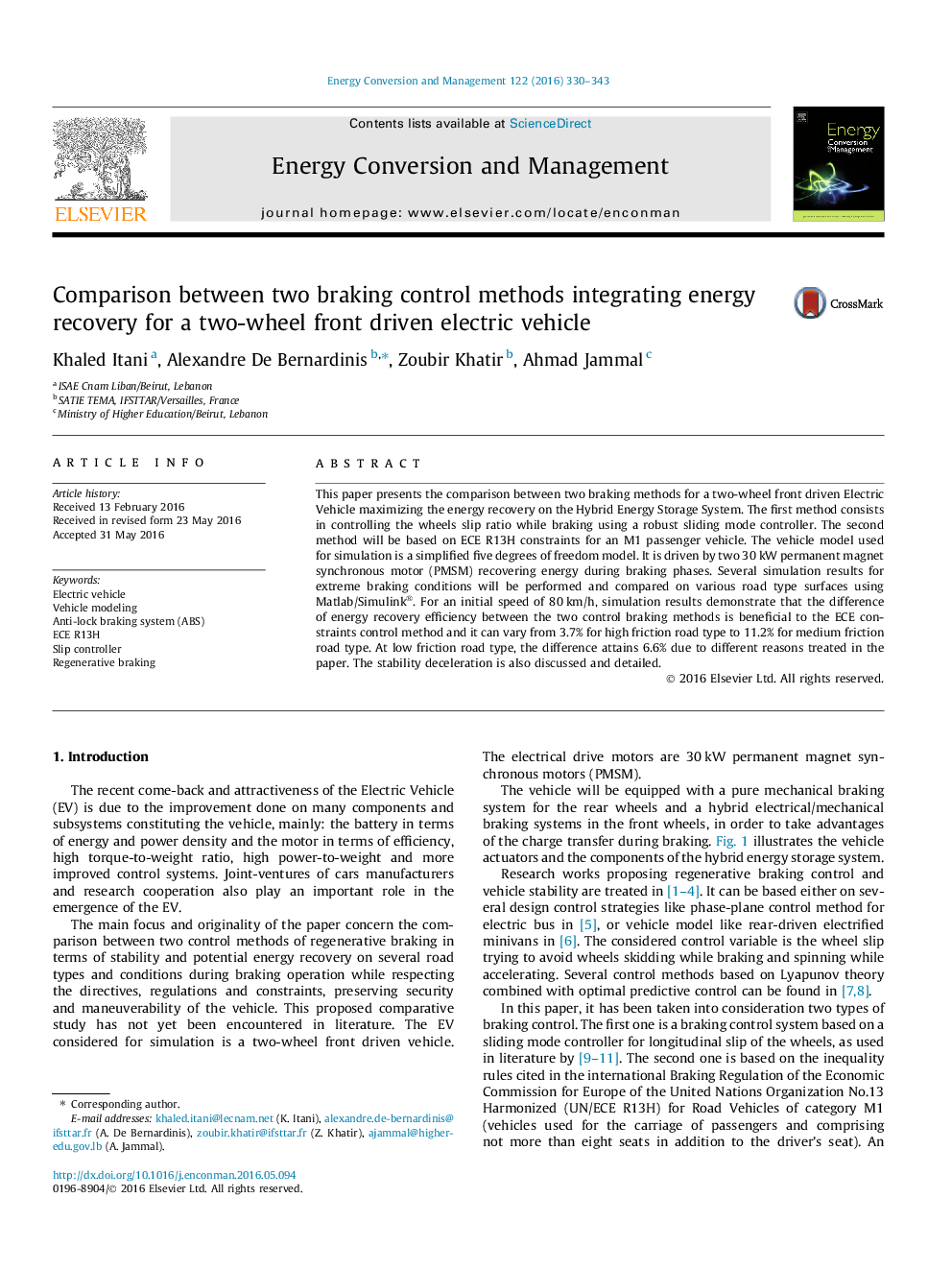| Article ID | Journal | Published Year | Pages | File Type |
|---|---|---|---|---|
| 7160188 | Energy Conversion and Management | 2016 | 14 Pages |
Abstract
This paper presents the comparison between two braking methods for a two-wheel front driven Electric Vehicle maximizing the energy recovery on the Hybrid Energy Storage System. The first method consists in controlling the wheels slip ratio while braking using a robust sliding mode controller. The second method will be based on ECE R13H constraints for an M1 passenger vehicle. The vehicle model used for simulation is a simplified five degrees of freedom model. It is driven by two 30Â kW permanent magnet synchronous motor (PMSM) recovering energy during braking phases. Several simulation results for extreme braking conditions will be performed and compared on various road type surfaces using Matlab/Simulink®. For an initial speed of 80Â km/h, simulation results demonstrate that the difference of energy recovery efficiency between the two control braking methods is beneficial to the ECE constraints control method and it can vary from 3.7% for high friction road type to 11.2% for medium friction road type. At low friction road type, the difference attains 6.6% due to different reasons treated in the paper. The stability deceleration is also discussed and detailed.
Related Topics
Physical Sciences and Engineering
Energy
Energy (General)
Authors
Khaled Itani, Alexandre De Bernardinis, Zoubir Khatir, Ahmad Jammal,
